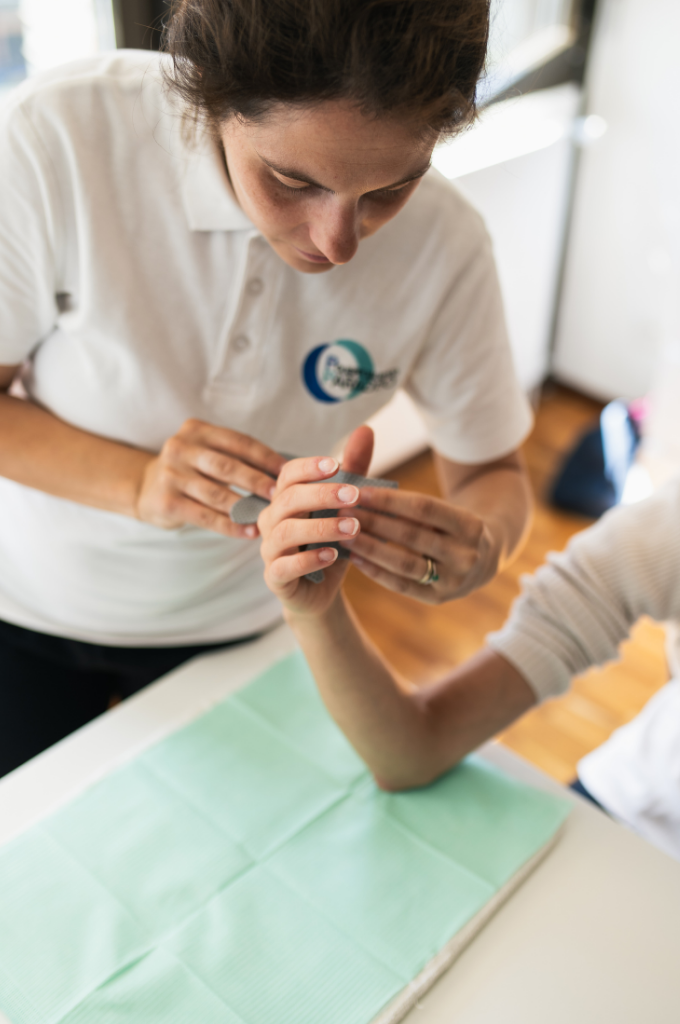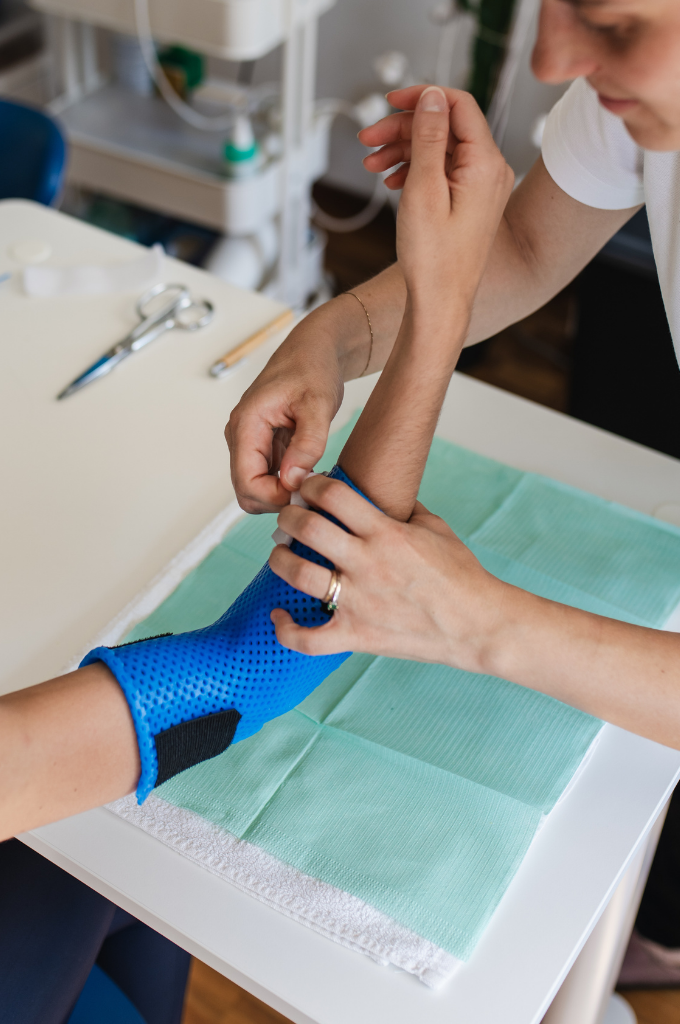Why occupational therapy is important in hand surgery treatment
Occupational therapy also focuses on rehabilitation in the context of hand surgery, addressing various conditions affecting the upper limb—particularly the wrist and hand with the goal of restoring and/or maintaining functionality in daily activities. Let’s take a closer look at occupational therapy for hand surgery treatment.
Conditions treated
The hand and wrist are areas with many anatomical structures and complex functions. This creates the need for a professional specialized in this type of rehabilitation.
The conditions treated include:
- tendonitis;
- bone fractures;
- sprain injuries;
- tendon injuries;
- ligament injuries;
- nerve injuries;
- peripheral neuropathies;
- rheumatic diseases.


What does hand rehabilitation treatment involve?
Rehabilitation can be either conservative or post-surgical: the first is applied when surgery is not an option, while the second follows surgery with specific protocols based on defined timelines.
Both approaches, depending on the condition and individual needs, may include the following elements:
- custom-made splints in static thermoplastic materials, which hold the hand in a fixed position, or dynamic ones, which allow some mobility;
- custom-made splints in neoprene;
- ergonomic analysis of daily and work activities to ensure proper interaction between person, machine, and environment;
- study of joint economy, aimed at providing guidance and practical tips to preserve the integrity and functionality of affected joints, sometimes introducing assistive devices into daily activities;
- various treatment techniques: passive and/or active joint mobilization, muscle manipulation, lymphatic drainage, kinesio taping, dry needling, paraffin baths;
- functional exercises;
- instrumental therapies: ultrasound, Tecar.
The role of the occupational therapist in hand rehabilitation
Relying on an occupational therapist means relying on a professional who can guide the patient through the most suitable and effective rehabilitation process. The focus is mainly on:
- active/passive range of motion;
- strength;
- dexterity;
- fine motor skills;
- functionality;
- pain symptoms.
Beyond surgery, why consult an occupational therapist for hand conditions?
They can be consulted especially for:
- Carpal Tunnel Syndrome
- Trigger finger
- De Quervain’s tendinitis
- osteoarthritis
- rhizarthrosis
- distal radius fractures
- fractures of metacarpals, proximal phalanges, distal phalanges, intra-articular fractures
- Dupuytren’s disease
- tennis elbow
- golfer’s elbow
- flexor and extensor tendon injuries
- median, radial, ulnar nerve injuries
- TFCC injury


